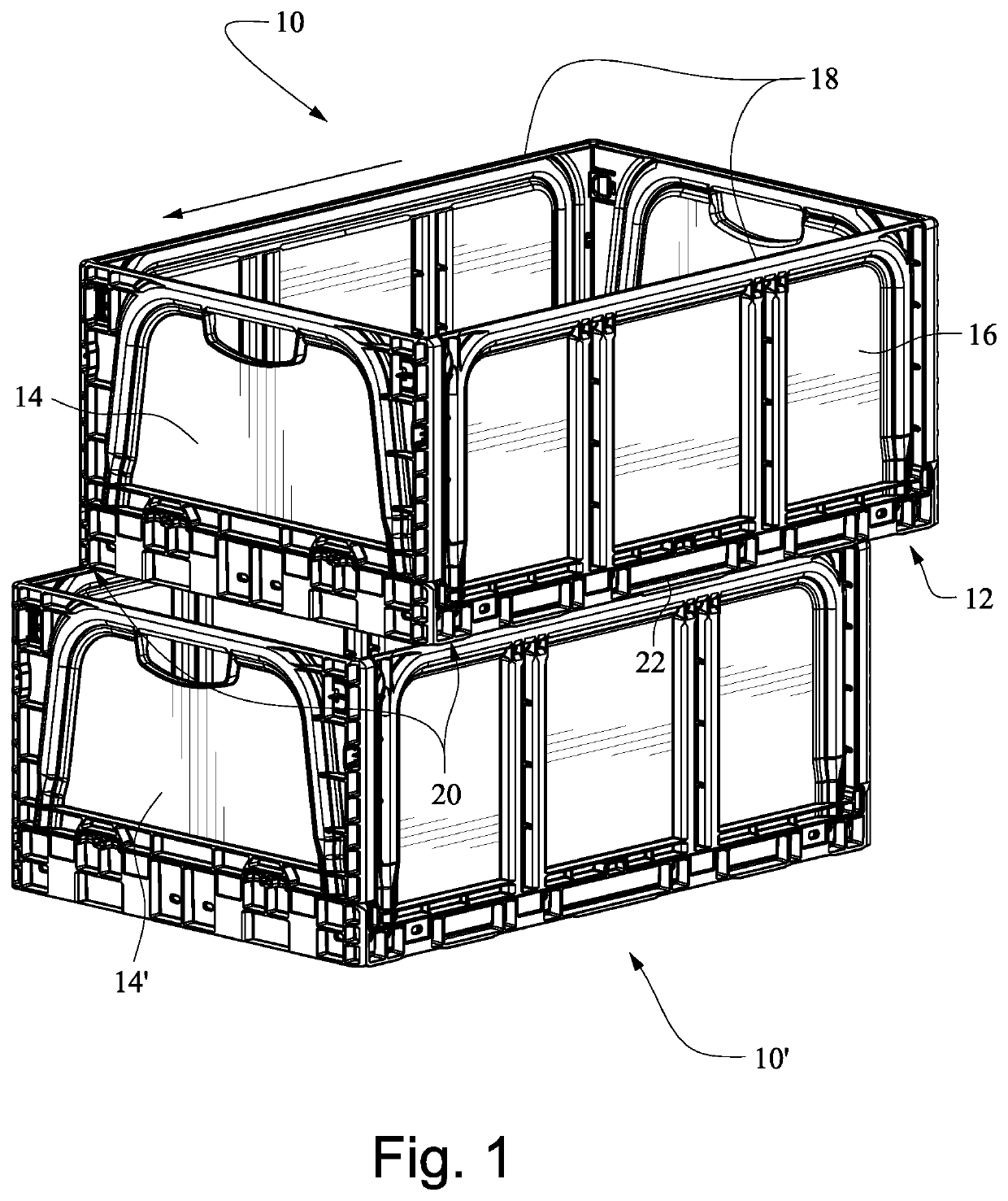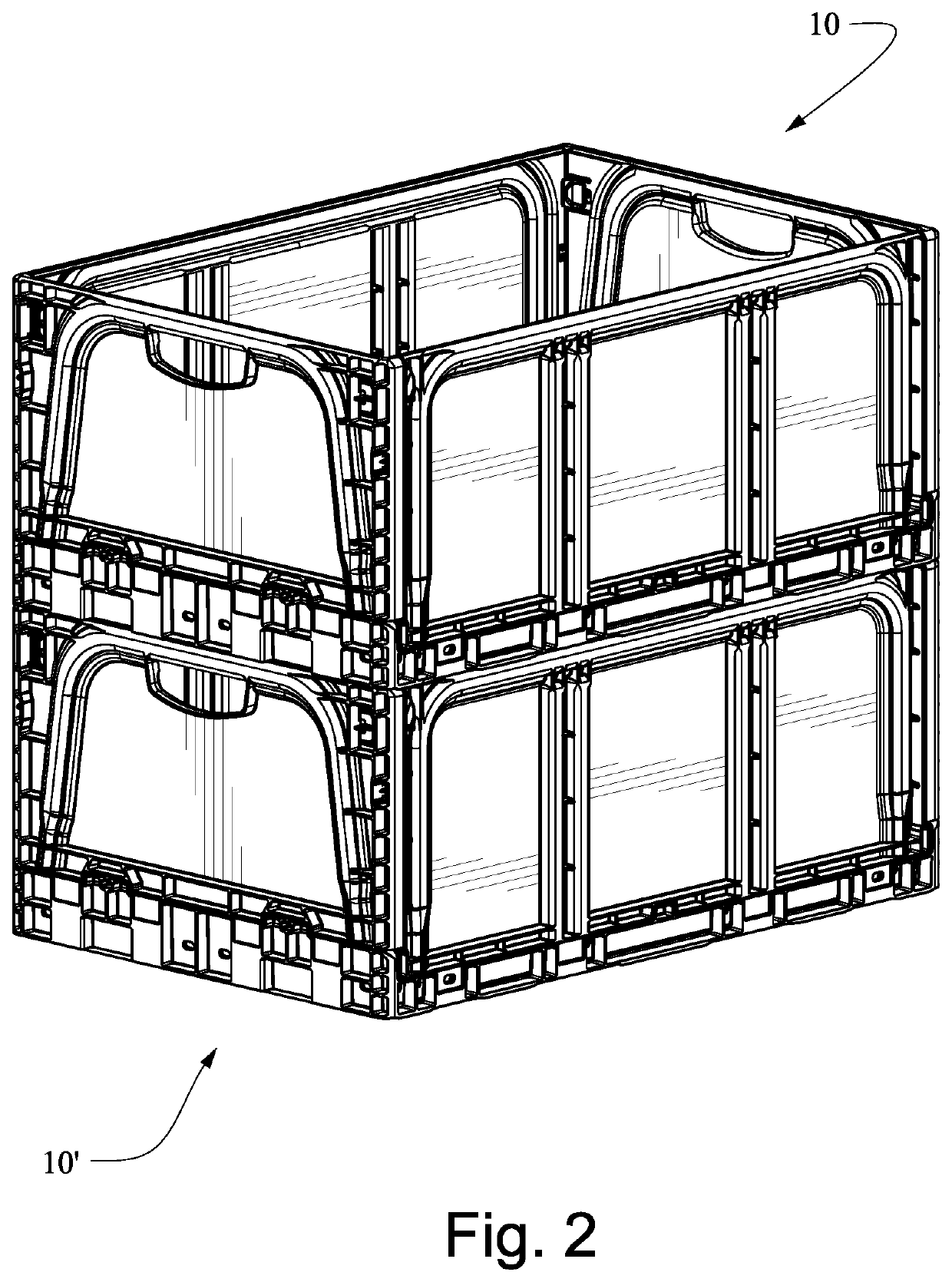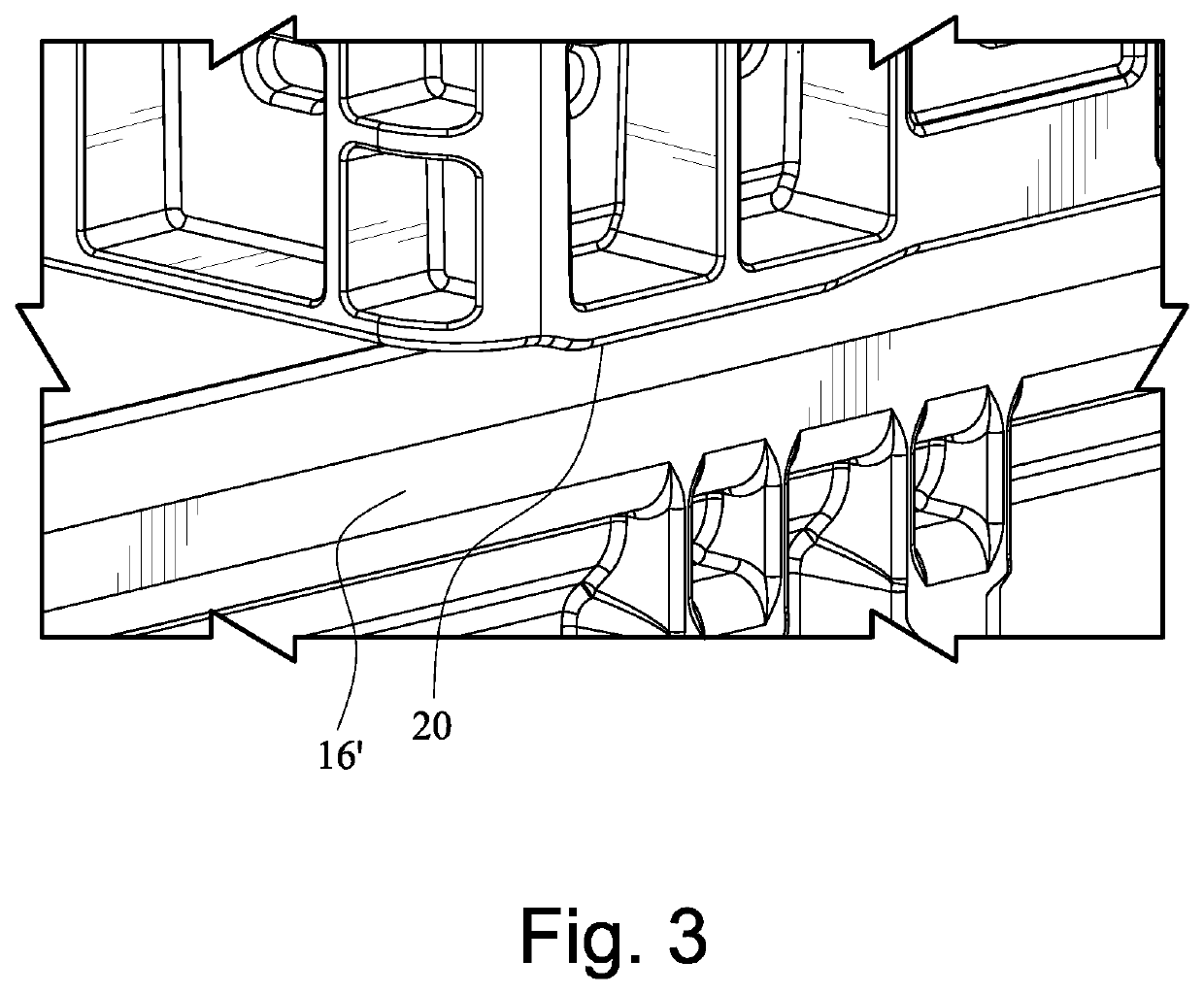Blind-stack and nest-interlock container
a container and blindstack technology, applied in the field of crates, can solve the problems of significant loss of stacking strength of the crate column, difficulty in manually blindstacking crates with heavy loads, and crate walls could be pushed outwards, etc., to achieve ergonomically/less lifting time, facilitate blindstacking, and minimize effort
- Summary
- Abstract
- Description
- Claims
- Application Information
AI Technical Summary
Benefits of technology
Problems solved by technology
Method used
Image
Examples
Embodiment Construction
[0020]FIGS. 1 and 2 show a crate 10 according to described embodiments configured for blind-stacking on an adjacent crate 10′. The crate 10 includes a bottom panel 12, end walls 14 protruding from the bottom panel 12, and sidewalls 16 extending from the bottom panel and connected between the end walls 14. The sidewalls 16 include a stacking rim 18 on a top surface.
[0021]In order to facilitate blind-stacking, the bottom panel 12 is provided with one or more guide ribs 20 generally under or aligned with the sidewalls 16.
[0022]With reference to FIGS. 3 and 4, in some embodiments, the guide ribs 20 are positioned adjacent forward ends of the crate 10 (relative to the direction of travel), where the guide ribs 20 are sized and shaped to positively engage the sidewalls 16′ of the adjacent crate 10′. The guide rib 20 thus provides a positive locking of the bottom panel 12 to the top of the sidewalls 16′ of the adjacent crate 10′. The positive lock with the sidewalls 16′ can be maintained w...
PUM
 Login to View More
Login to View More Abstract
Description
Claims
Application Information
 Login to View More
Login to View More - R&D
- Intellectual Property
- Life Sciences
- Materials
- Tech Scout
- Unparalleled Data Quality
- Higher Quality Content
- 60% Fewer Hallucinations
Browse by: Latest US Patents, China's latest patents, Technical Efficacy Thesaurus, Application Domain, Technology Topic, Popular Technical Reports.
© 2025 PatSnap. All rights reserved.Legal|Privacy policy|Modern Slavery Act Transparency Statement|Sitemap|About US| Contact US: help@patsnap.com



